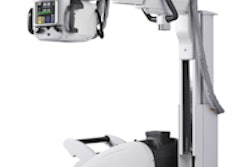VIENNA - Using a mobile digital radiography (DR) system in the emergency department (ED) ward helped a radiology department at a French hospital cut the amount of time to image ED patients in half. But the department's efforts to make the efficiency gains permanent have been stymied by government regulations on radiation exposure in healthcare facilities.
In a presentation on Sunday at the 2008 European Congress of Radiology (ECR), Dr. Antoine Scherrer at Hospital Foch in Suresnes described his hospital's effort to see whether mobile DR technology could enable the radiology department to provide better service to its ED ward, and help move patients through the ED more quickly.
Hospital Foch's radiology department operates a stationary DR system that's located on a different level than the ED ward. Patients are sent to the system in stretchers and wheelchairs, or walk themselves, but in all cases require an escort and must use the facility's elevator. In addition, ED patients also have to be integrated into the radiology department's workflow of regularly scheduled x-ray studies.
The radiology department is already getting images back to ED physicians quickly, thanks to the DR unit and the facility's PACS network, which enables images to be sent to the ED ward as soon as they are taken. But the process of transporting patients to the DR system has proved to be a bottleneck, Scherrer said.
"This process is time-consuming," Scherrer said. "Most emergency physicians think it is too long, and advocate for the implementation of a dedicated room outside of the radiology department, at the level of the emergency department."
Rather than go to the expense and effort of installing such a room, the radiology department instead located a mobile flat-panel DR system (Definium AMX 700, GE Healthcare, Chalfont St. Giles, U.K.) in the emergency department. Scherrer studied the system's impact on radiology image turnaround times over a two-week period in November 2007.
Prior to installing the mobile DR unit, Scherrer's research team had calculated that it took an average of 78 minutes from when an ED physician ordered a DR exam to when the image was made available over the PACS network to ED physicians. For point of reference, the overall amount of time a patient spends in the ED ward at Hospital Foch is 142 minutes.
The image turnaround time was typically faster overnight when the radiology department was less crowded and slower at midday. (Full radiology reports were typically provided within 24 hours of a study being taken, but Scherrer said that report turnaround times were not perceived to be a problem at his facility.)
During the study, Scherrer's department imaged 96 patients in the ED with the portable DR unit. They found that the system delivered good image quality, although it was difficult to get appropriate patient positioning for some studies due to the size and weight of the 41 x 41-cm DR plate. Particularly difficult were oblique views, such as those required for shoulder studies.
Scherrer's group found that the main benefit of the system was the elimination of patient waiting time due to the need to transport patients. The mean time between an ED physician's request for an image and its availability was cut from 78 minutes to 34 minutes.
Scherrer said that several challenges remain regarding the operation of a mobile DR unit on a permanent basis in the ED ward. One issue is winning radiographer acceptance of the system due to the weight of the detector plate and the difficulty of moving the mobile system in the ward.
More significantly, however, is dealing with European rules for protecting staff and the public from radiation generated during mobile x-ray studies. Although radiation levels generated by the system were very low, the ED ward did not have the level of shielding employed in the radiology department to limit scatter radiation.
If Hospital Foch wanted to implement the mobile DR unit on an ongoing basis, it would have to file an application with regulatory authorities detailing the amount of radiation being produced by the system.
"You have to take time to review the building architecture, calculate the time of exposure, number of exposures, the place where the patients stay, and how long they stay there," Scherrer said. "You may be able to do it, but it is a long task."
The issue may become moot in Hospital Foch's case anyway, as in two years both the radiology and ED departments will be moving to a new building. The design of the new building will include the shielding required by government regulations to support mobile imaging outside the radiology department, he said.
Such a development is a requirement, due to the growing need for digital mobile imaging in the emergency department. Even the new generation of mobile DR units includes wireless image transmission, according to Scherrer.
"It's the future of the emergency department," he said. "We'll have to get by with the regulations, because it's the way imaging should be done."
By Brian Casey
AuntMinnie.com staff writer
March 7, 2008
Related Reading
PACS drives European CR, DR market, January 10, 2006
European mobile imaging equipment market on the rise, September 8, 2004
European DR market doubles since 2000, May 12, 2004
Copyright © 2008 AuntMinnie.com



















